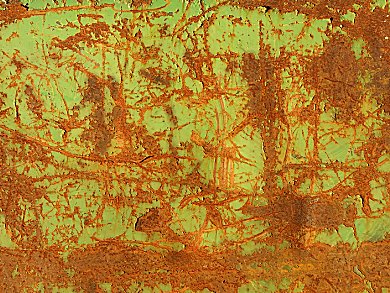Stainless steel corrosion caused by a build up of metal oxides on the metals’ surfaces are expensive for industry. Currently, aggressive chemicals such as strong acids and chelating agents are used to remove the oxides. Andrew Mills and David Hazafy, Queen’s University, Belfast, Ireland, have made anatase titania (TiO2) films to apply to metal surfaces to easily clean them.
Conduction band electrons and valence band holes are produced when TiO2, a well known photocatalyst used in the redox reductions of metal oxides, is exposed to ultraviolet light. The electrons and holes can either recombine or move to the surface of the film where they undergo redox reactions with adsorbed chemical species. On introduction of an electron donor, such as ethanol, the donor reacts with the holes, leaving the electrons free to react with metal oxides.
The reseachers used a TiO2-based ink that sets as a dry film on the metal surface providing good contact between the photocatalyst and the metal oxide. The ink was made by mixing TiO2 powder and the electron donor glycerol with hydroxyethyl cellulose, which binds the components. After irradiation with UV light the oxide layer was removed with water to reveal the bright metal surface underneath.
- UV-activated photocatalyst films and inks for cleaning tarnished metals,
A Mills, D Hazafy,
Chem. Commun. 2012.
DOI: 10.1039/c1cc15774d




